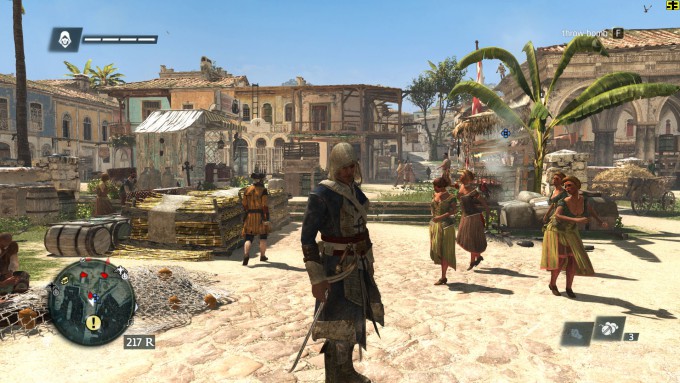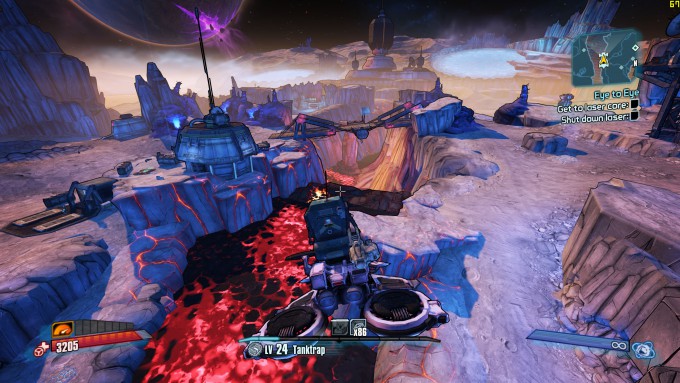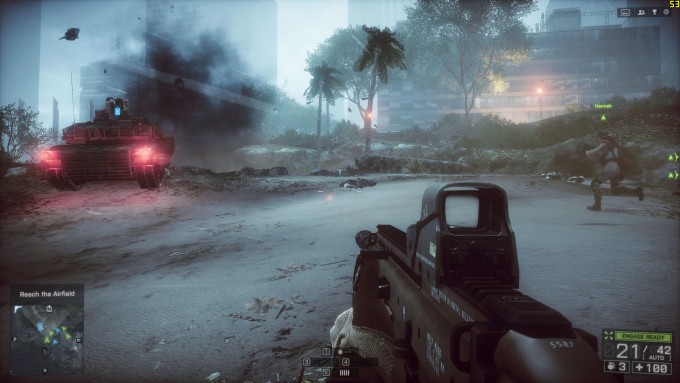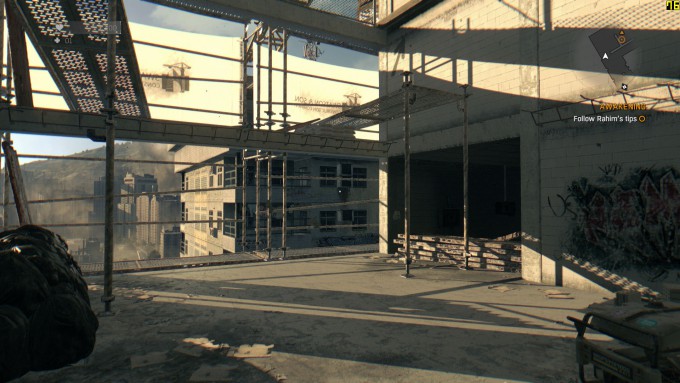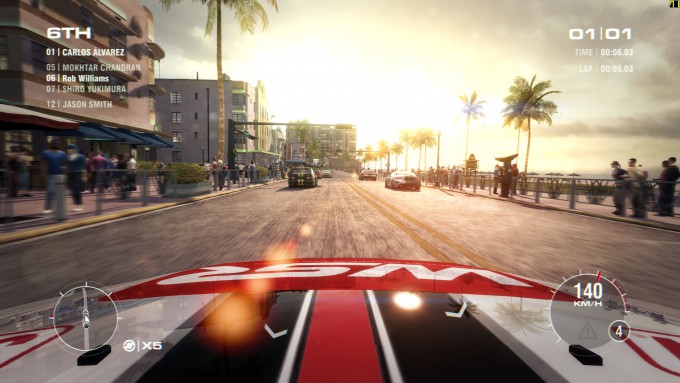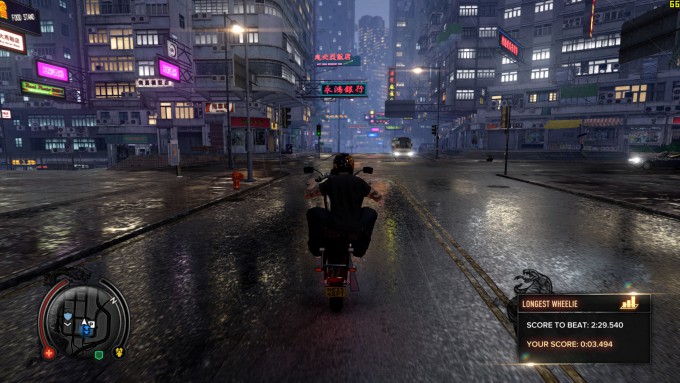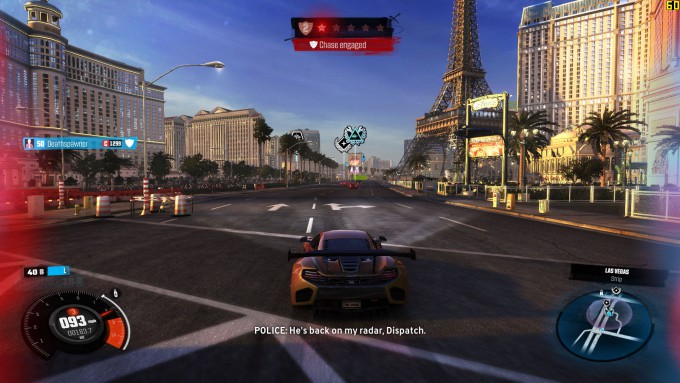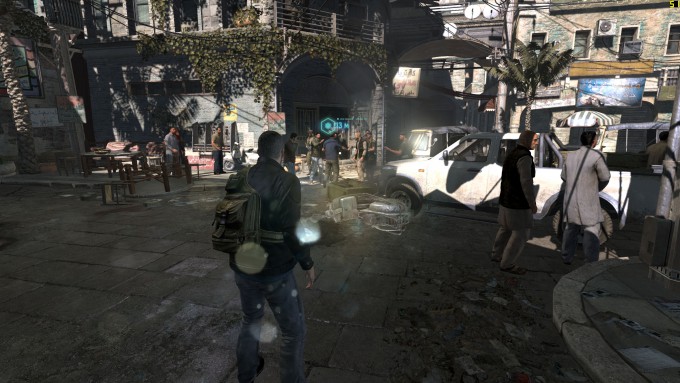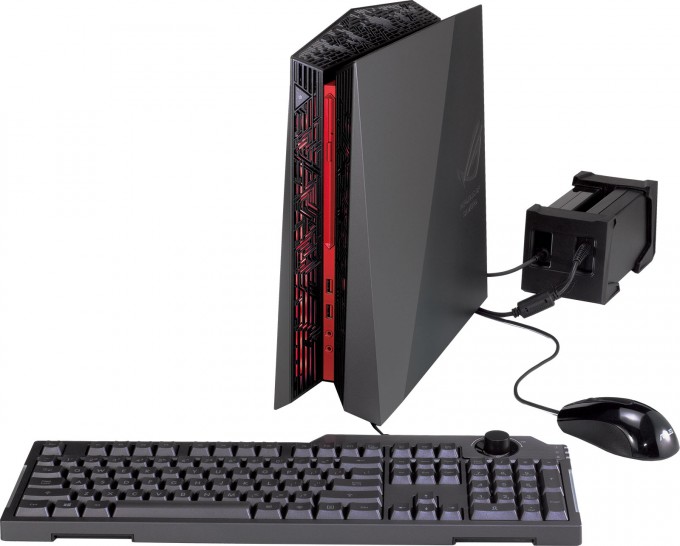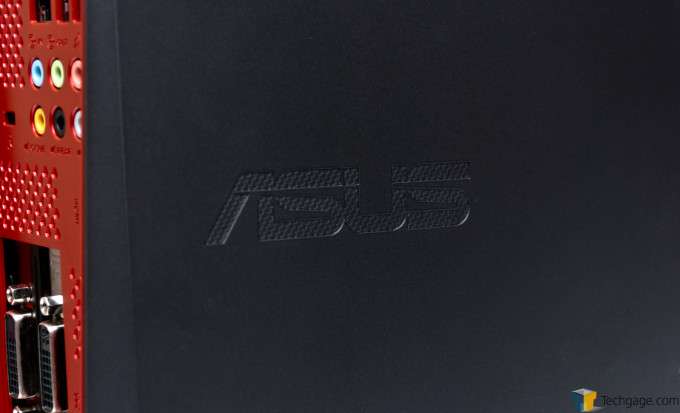- Qualcomm Launches Snapdragon 4 Gen 2 Mobile Platform
- AMD Launches Ryzen PRO 7000 Series Mobile & Desktop Platform
- Intel Launches Sleek Single-Slot Arc Pro A60 Workstation Graphics Card
- NVIDIA Announces Latest Ada Lovelace Additions: GeForce RTX 4060 Ti & RTX 4060
- Maxon Redshift With AMD Radeon GPU Rendering Support Now Available
ASUS Republic of Gamers G20 Gaming PC Review

There’s no shortage of small PCs in the market, but it could be argued that there is a shortage of small PCs that look awesome. If that’s the measurement, ASUS has hit the ball out of the park with its ROG G20. Not only does this PC have what it takes to stand out of the crowd, it boasts impressive specs and features to go along with it.
Page 2 – Gaming Performance, Final Thoughts
To see what the ROG G20 is capable of from a gaming standpoint, I took five games from our current benchmarking suite to test with, and added three other recent titles for good measure.
As with the “Best Playable” pages in our regular graphics card evaluations, I tweak the settings of each game until I can find a good blend of image quality and playability. The overall goal is to reach an average of 60 FPS, but in some cases I’ll let that slide if it comes at next-to-no expense for the higher graphics details it allows me to have.
I gathered all performance data through manual benchmarking, and if you’re familiar with our GPU content already, you’ll no doubt recognize the scenes from some of the games here. For those games not featured in our current GPU test suite, I created runs on-the-fly. Fraps 3.5.99 is used for framerate reporting.
All of the in-game screenshots on this page were taken using the same settings in the Best Playable tables. For the sake of showing you what kind of performance the game was getting at that very moment, Fraps’ framerate counter can be seen in the top-right corner.
Assassin’s Creed IV: Black Flag
| Assassin’s Creed IV: Black Flag | |||
| Minimum | Average | ||
| 49 | 59 | ||
| Resolution: | 1920 x 1080 | Environment: | Very High |
| Shadow: | Very High | Texture: | High |
| Reflection: | High | Anti-aliasing: | FXAA |
| God Rays: | High | Ambient Occlusion: | Off |
| Volumetric Fog: | On | Motion Blur: | On |
Like NVIDIA’s GeForce GTX 760 itself, the target resolution for ASUS’ ROG G20 is 1080p. As we’ll see in select instances, some games can bump up to 1440p just fine, but AC IV: Black Flag was not one of them. The upside, though, is that at 1080p, very high detail levels can be used. The exception is ambient occlusion, which comes at high cost to the GPU, but applies modest gains in realism.
Borderlands: The Pre-Sequel
| Borderlands: The Pre-Sequel | |||
| Minimum | Average | ||
| 37 | 67 | ||
| Resolution: | 2560 x 1440 | Anisotropic Filtering: | 16x |
| Bullet Decals: | High | Foliage Distance: | Far |
| Texture Quality: | High | Game Detail: | High |
| Ambient Occlusion: | On | Depth of Field: | On |
| FXAA: | On | View Distance: | Ultra High |
| PhysX: | Medium | ||
AC IV: Black Flag might not have run well at 1440p, but Borderlands: The Pre-Sequel had no issue at all. In fact, the game could be maxed out, which included Medium detail levels for PhysX. A High PhysX setting could no doubt be used, but on smaller GPUs I think it’s best avoided – it’s another one of those luxury features that will just cause some serious lag when you least expect it.
Battlefield 4
| Battlefield 4 | |||
| Minimum | Average | ||
| 39 | 59 | ||
| Resolution: | 2560 x 1440 | Texture Quality: | High |
| Texture Filtering: | High | Lighting: | High |
| Effects: | High | Post Processing: | High |
| Mesh: | High | Terrain: | High |
| Terrain Decoration: | High | Anti-aliasing Deferred: | Off |
| Anti-aliasing Post: | Off | Ambient Occlusion: | Off |
With Battlefield 4, you have two options: Run Ultra detail at 1080p, or drop down to High for 1440p. Considering just how popular 1440p displays are becoming, I think the latter option will prove a common choice.
Dying Light
| Dying Light | |||
| Minimum | Average | ||
| 51 | 69 | ||
| Resolution: | 1920 x 1080 | Texture Quality: | High |
| Shadow Map Size: | High | Foliage Quality: | High |
| View Distance: | 50% | Ambient Occlusion: | Off |
| NVIDIA HBAO+: | Off | NVIDIA Depth of Field: | On |
| Motion Blur: | On | Antialiasing: | On |
Dying Light runs very well on the ROG G20, but like AC IV: Black Flag, it was simply unrealistic to expect to run it at 1440p. With still very good detail levels, the game ran extremely well at 1080p. Notable options turned off include ambient occlusion, and likewise NVIDIA’s HBAO+.
GRID 2
| GRID 2 | |||
| Minimum | Average | ||
| 60 | 68 | ||
| Resolution: | 2560 x 1440 | Multisampling: | 4x MSAA |
| Night Lighting: | High | Shadows: | Ultra |
| Advanced Fog: | On | Particles: | Ultra |
| Crowd: | Ultra | Cloth: | High |
| Ambient Occlusion: | Low | Soft Ambient Occlusion: | Off |
| Ground Cover: | High | Vehicle Details: | Ultra |
| Trees: | Ultra | Objects: | Ultra |
| Vehicle Reflections: | Ultra | Water: | High |
| Post Process: | High | Skidmarks: | On |
| Advanced Lighting: | On | Global Illumination: | Off |
| Anisotropic Filtering: | Ultra | ||
GRID 2 is another game that runs just fine at 1440p, although that might not strike too many people as a surprise. To keep the minimum FPS to at least 60 FPS, I set ambient occlusion to Low, while also turning off soft ambient occlusion. You can turn these back on if you don’t mind losing about 10 FPS or thereabouts.
Sleeping Dogs
| Sleeping Dogs | |||
| Minimum | Average | ||
| 56 | 67 | ||
| Resolution: | 2560 x 1440 | Anti-aliasing: | Normal |
| High-res Textures: | On | Shadow Resolution: | High |
| Shadow Filtering: | High | Ambient Occlusion: | On |
| Motion Blur: | High | World Density: | Extreme |
Sleeping Dogs joins the 1440p group, as it handles the game great at max detail – save for dropping the anti-aliasing down to Normal, from High.
The Crew
| The Crew | |||
| Minimum | Average | ||
| 52 | 60 | ||
| Resolution: | 1920 x 1080 | Geometry: | Ultra |
| Shadows: | High | Textures: | High |
| Environment Mapping: | Ultra | Depth-of-Field: | High |
| Motion Blur: | High | Anti-aliasing: | FXAA |
GRID 2 might run great at 1440p, but The Crew certainly doesn’t. The upside, as we saw with AC IV: Black Flag, is that we’re able to use beefy detail levels at that resolution, never dipping below 50 FPS – a great thing when we’re talking about a racing game.
Tom Clancy’s Splinter Cell Blacklist
| Tom Clancy’s Splinter Cell Blacklist | |||
| Minimum | Average | ||
| 49 | 60 | ||
| Resolution: | 2560 x 1440 | Texture Detail: | Ultra |
| Shadow: | High | Parallax: | On |
| Tessellation: | On | Texture Filtering: | 16x |
| Ambient Occlusion: | Off | Anti-aliasing: | FXAA |
With ambient occlusion turned off, Blacklist runs well at 1440p.
I happened to have the ROG G20 connected to a 4K monitor when testing, and as Blacklist automatically sets itself to the native resolution, I ended up playing for a few moments at that super-high res. While I couldn’t even hit 30 FPS, I have to say that I was really impressed by just how smooth it actually was. So, if you like that truly cinematic console experience we’re always hearing about, the option is yours.
For the sake of this review, and the fact that this PC is targeted at gamers, gaming was the focus of my benchmarking. If you’re interested in seeing what a CPU like Intel’s Core i7-4790 is capable of, I’d recommend checking out the results from my Core i7-4770K review (the 4790 is clocked 100MHz faster.)
In addition, 3DMark scores put the ROG G20 at 200 points behind (-4%) our test bench with a reference GTX 760. However, our test bench has 32GB of RAM, and a six-core Intel processor clocked at 4.5GHz, so I’d say that ASUS’ ROG G20 performed quite well overall.
Final Thoughts
I think it’s safe to say that ASUS’ ROG G20 is going to be the most unique PC I’ll be taking a look at for quite some time. While countless vendors are building small PCs nowadays, the G20 stands out from the crowd thanks to its cool Mayan-inspired styling and customizable lighting system.
While I’ve been using the ROG G20 on-and-off for about a month, there was a point where I used it for five straight days as my primary PC, so as to really experience what it has to offer. Overall, the experience was good. The PC lacks in-your-face bloatware, which I give ASUS kudos for.
As I mentioned earlier, one thing this PC really needs is an SSD. I don’t really consider SSDs to be an “option” anymore; they’re a given. If you build a new PC, you’d be crazy to not toss in an SSD for the OS. Using this PC hands-on for nearly a week only strengthened that belief.
That said, ASUS’ product page shows that the G20 can include “up to” a 256GB SSD, although I am not sure where those are available. Like the GTX 780-equipped model, this spec upgrade might be limited to Europe. I’d anticipate that given the sudden surge of M.2 SSDs, and also NVIDIA’s GTX 900 series launch, ASUS will update its G20 lineup on these shores in the near-future.
Outside of those issues, the ROG G20 has proven itself to be a solid, stable machine. While the lack of an SSD was noticeable, it was still a very fast PC, and served me quite well throughout testing and also a bunch of gaming sessions. Despite its small form-factor, I never experienced lag in games due to overheating; it simply was never an issue or even a concern. It kept on trucking, whether I was playing The Crew, a Dreamcast game through nullDC, or a long stress using Futuremark’s 3DMark.
One area I haven’t tackled up to this point is noise. As you might expect from a small PC, heat can sometimes be an issue, but it’s a minor one here. When I first hooked-up the ROG G20 and hit the power, I honestly thought I forgot to plug the power into the wall, because it was dead silent. It wasn’t until the monitor video kicked-in that I realized the PC was in fact on.
That quietness becomes a theme with the ROG G20. During normal use, you’re unlikely to hear the PC even humming if it’s sitting on the floor. You’ll hear it a bit better if it’s on your desk, which is where I had it situated during testing, but it’s still a minor sound. In most cases, it will be as quiet, or quieter than a laptop.
The only time the fan ramped up during normal use was when I loaded up a video – in that case, the GPU fan might ramp up briefly, but then go quiet again. Even during gaming, though, the PC keeps calm. It’s certainly noticeable, but not as much as you’d imagine from a small PC. It certainly helps that the GPU inside the PC isn’t some custom model – it’s a real reference-based GTX 760.
Ultimately, ASUS’ ROG G20 is a great PC for a handful of reasons, but is held back by a handful of other reasons. If this PC featured a higher-end GPU and included an SSD, I think it’d be far more attractive to the masses.
Pros
- Awesome aesthetics. Customizable lighting.
- Solid performance.
- Super quiet during regular use.
- Mouse and keyboard included, although they’re a little basic.
Cons
- No SSD in this model – an inexcusable trait for a new high-end PC.
- Last-gen graphics card (GTX 960 was not released when I received this unit).
- Requires two power plugs (one for PC, one for GPU).
- Not easily user-upgradable.
Support our efforts! With ad revenue at an all-time low for written websites, we're relying more than ever on reader support to help us continue putting so much effort into this type of content. You can support us by becoming a Patron, or by using our Amazon shopping affiliate links listed through our articles. Thanks for your support!




